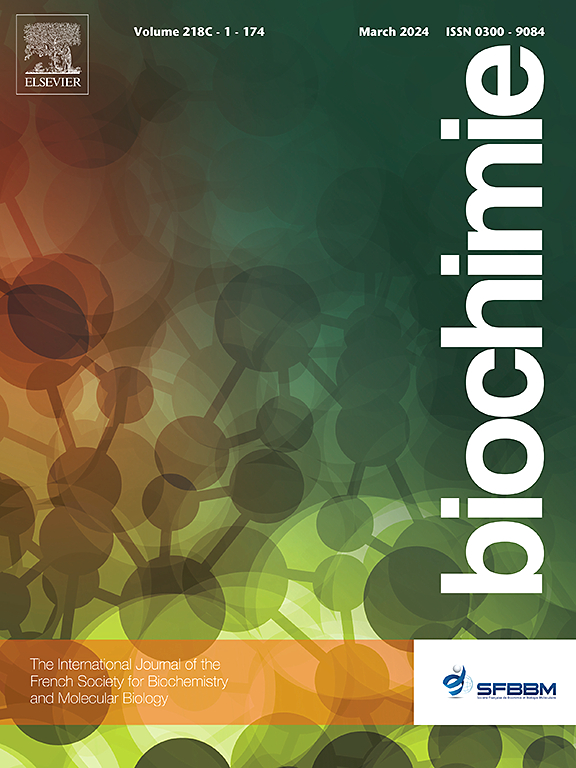化疗与 c-MET 抑制剂联合使用对 c-MET 过度表达的胰腺癌细胞有协同作用。
IF 3.3
3区 生物学
Q2 BIOCHEMISTRY & MOLECULAR BIOLOGY
引用次数: 0
摘要
胰腺导管腺癌(PDAC)仍然是最致命的恶性肿瘤之一。c-MET是参与PDAC进展的重要致癌激酶。我们测定了 c-MET 抑制剂(克唑替尼和卡博赞替尼)联合化疗药物(多柔比星、奥沙利铂和吉西他滨)对不同表达不同水平 c-MET 的 PDAC 和肺腺癌细胞系的抗癌效果。MTT 试验用于评估细胞生长抑制作用。在球形培养物中评估了药物组合的协同作用,并通过 Hoechst33258 染色确定细胞凋亡。通过 RNase/PI 流式细胞计数法检测了药物组合对细胞周期和凋亡诱导的影响。我们还使用 2',7'-二氯荧光素-二乙酸酯(DCFH-DA)测定法评估了活性氧(ROS)水平,以探索协同作用的可能机制。在c-MET过表达细胞中,克唑替尼或卡博替尼与多柔比星联用会产生协同效应。相反,c-MET抑制剂与其他药物的组合则具有相加甚至拮抗作用。用Calcusyn软件计算的联合指数(CI)值为:克唑替尼为0.631-0.730,卡博替尼为0.542-0.746。在 Suit-2、c-MET 依赖性 PDAC 细胞中,协同组合显示出显著的球形生长抑制和凋亡诱导作用。与单药治疗相比,这些联合用药还能明显增加处于凋亡亚 G1 期和 G2/M 期的细胞数量。ROS生成的增加似乎是协同作用的一个可能机制。总之,在c-MET过表达的癌细胞中,c-MET抑制剂与DNA损伤剂多柔比星具有协同作用,这表明这些联合疗法可能是一种很有前景的癌症治疗策略。本文章由计算机程序翻译,如有差异,请以英文原文为准。
Combination of chemotherapy and c-MET inhibitors has synergistic effects in c-MET overexpressing pancreatic cancer cells
Pancreatic ductal adenocarcinoma (PDAC) remains as one of the most lethal malignancies. c-MET is an important oncogenic kinase involved in PDAC progression. We determined the anticancer effect of c-MET inhibitors, crizotinib and cabozantinib, combined with chemotherapeutic agents, doxorubicin, oxaliplatin and gemcitabine, against different PDAC and a lung adenocarcinoma cell line expressing different levels of c-MET. MTT assay was performed to assess cell growth inhibition. Synergistic combinations were evaluated in spheroid cultures, while apoptosis was determined through Hoechst33258 staining. The effect of drug combinations on cell cycle and apoptosis induction was examined by RNase/PI flow cytometric assay. We also evaluated reactive oxygen species (ROS) levels using 2′,7′-dichlorofluorescein-diacetate (DCFH-DA) assay to explore the possible mechanisms contributing to synergism. Combination of crizotinib or cabozantinib with doxorubicin exhibited synergistic effects in c-MET overexpressing cells. Conversely, combinations of c-MET inhibitors with other agents were additive or even antagonistic. Combination index (CI) values calculated with Calcusyn software were 0.631–0.730 for crizotinib and 0.542–0.746 for cabozantinib co-administered with doxorubicin. These synergistic combinations showed significant spheroid growth inhibition and apoptosis induction in Suit-2, c-MET dependent PDAC cells. These combinations also significantly increased the number of cells in both apoptotic sub-G1 phase and the G2/M phase compared to single-drug treatment. Increased ROS production seemed to be a possible mechanism underlying synergism. In conclusion, c-MET inhibitors synergize with DNA damaging agent, doxorubicin, in cancer cells with c-MET overexpression, indicating that these combination therapies may be a promising cancer therapeutic strategy.
求助全文
通过发布文献求助,成功后即可免费获取论文全文。
去求助
来源期刊

Biochimie
生物-生化与分子生物学
CiteScore
7.20
自引率
2.60%
发文量
219
审稿时长
40 days
期刊介绍:
Biochimie publishes original research articles, short communications, review articles, graphical reviews, mini-reviews, and hypotheses in the broad areas of biology, including biochemistry, enzymology, molecular and cell biology, metabolic regulation, genetics, immunology, microbiology, structural biology, genomics, proteomics, and molecular mechanisms of disease. Biochimie publishes exclusively in English.
Articles are subject to peer review, and must satisfy the requirements of originality, high scientific integrity and general interest to a broad range of readers. Submissions that are judged to be of sound scientific and technical quality but do not fully satisfy the requirements for publication in Biochimie may benefit from a transfer service to a more suitable journal within the same subject area.
 求助内容:
求助内容: 应助结果提醒方式:
应助结果提醒方式:


